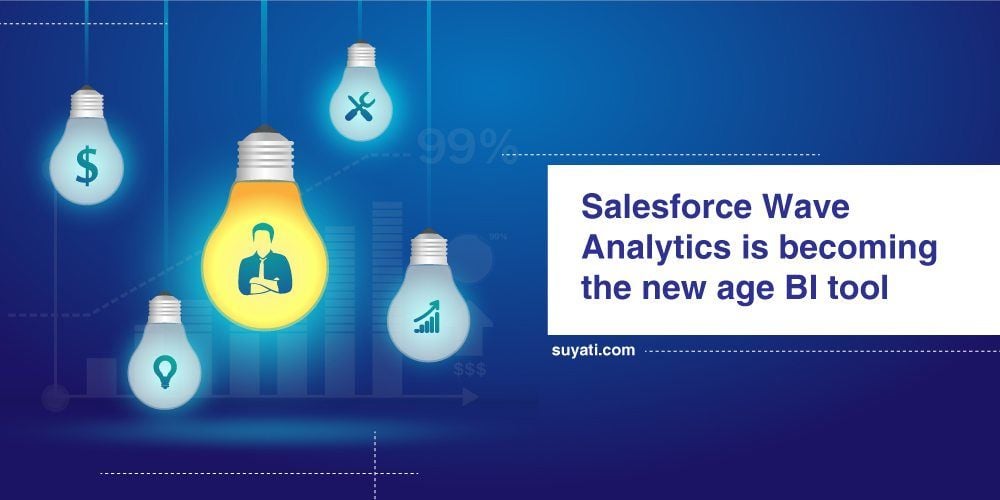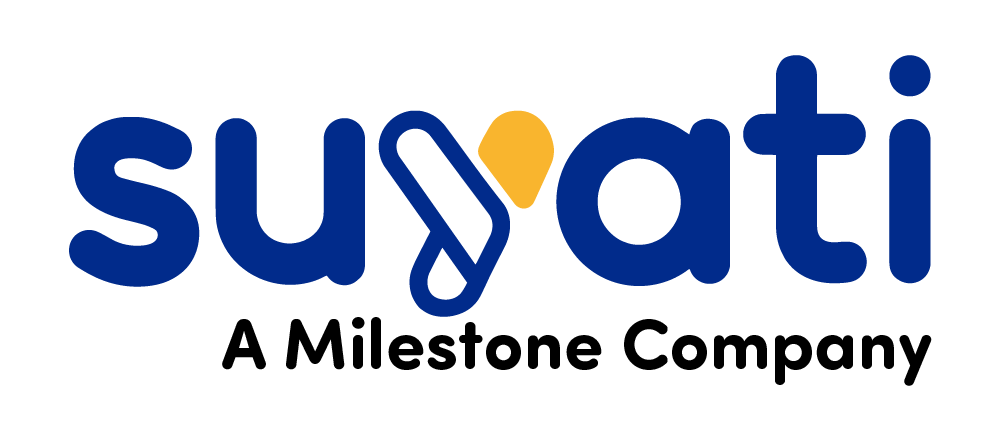
Data is now a critical source of competitive advantage for firms. To make sense of the data, enterprises use BI tools that offer reports and dashboards, with loads of insights. However, most of these tools are add-ons to enterprise systems and hence do not offer seamless interaction or customizable reporting based on real-time scenarios.
Wave, built on the Salesforce.com platform, is able to overcome such limitations. Being on the Salesforce platform allows this BI tool to integrate seamlessly from the world go. Wave enables key executives to make “data-driven” decisions, or interact with customers in an insightful way, backed up by actionable insights from relevant and current data, and with recommended insights.
However, Wave is not just another run-of-the-mill BI tool, riding piggybank on Salesforce. Here’s why.
1. Ease of Use
Salesforce always leverages the power of simplicity, and true to form, Force.com Reports tools allow business users to create highly complex and intuitive reports very easily. Salesforce Wave goes a step further, building upon these inherent advantages, and adding a sense of dynamism to the report.
Wave visualizations are available across the entire Customer Success platform, and it is possible to embed Wave-based dashboards within any Salesforce object. End users may create and support highly intuitive dashboards very easily, and implement charts that refresh in real-time. Users get such powerful insights without having to refresh dashboards manually, or depend on email-based updates, as is the case with many other BI tools.
2. Aggregation of Data
Conventional reporting tools are capable of generating highly powerful and insightful reports, but are limited to the data within its database. A good example is Salesforce’s Force.com itself, which offers highly powerful reports, with users having the ability to generate complex reports and dashboards in double quick time, but with the insights being limited to the Org data, or any one instance.
Today’s highly dynamic enterprises invariably have data spread over multiple sources, from Org data to data from IoT sensor, from customer facing touch points to data generated by mobile app visitors. Salesforce Wave tools aggregates information from multiple disparate sources into a single data warehouse-like environment, offering business managers and other users a unified view of the business.
Related: Top 10 ETL Tools for Salesforce Data Migration
3. Currency of Data
Today, data is growing at an exponential pace. This trend, combined with the fast paced business environment where even a few minutes of delay can make a big difference, means data churn is also high. More and more enterprises are now finding out the hard way that Big Data is an exercise in futility without “right data.” Right data invariably means current data – what is the customer doing or desiring now, and what are his/her current tastes and preferences.
For example, Force.com generates report in real time, but the underlying data, with which the system generates the report, is not real time; it is loaded from the operational data sources on a periodic basis, often in batches. With Wave, even the data is fed real time.
It gets even better when compared with traditional data warehouses. With Wave, there is no need to architect a data model. Wave adopts an approach similar to Google Search, allowing users to upload data quickly, and interact and explore with such data on any device of choice, readily. The high speed search-based query technology radically reduces the time to go-live, compared to the months and even years spent trying to architect star-schema or snowflake data models.
4. Mobile Optimization
Unlike most traditional BI products, Wave is mobile-first, designed for the mobile and optimised to suit the needs of customer support, sales, marketing, and other teams who would be using these tools the most.
Moreover, with Wave being cloud based, there is infinite scalability on offer. Virtually no data set is too big for Wave to handle.
5. Innovation
True to form, Salesforce has recently launched “Wave Actions,” enabling users to define specific actions, such as updating accounts or providing account activity based action items directly, from within the dashboard, empowering sales teams even further. It also offers a viable solution to a longstanding problem plaguing the world of BI, as in how companies actually take action based on analytic findings.
Salesforce is now repositioning its core team to support Wave Analytic Cloud. Towards this end, Salesforce has made key re-organization of personnel, including a GM capable of supporting a go-to-market strategy more focused on specific industries and stakeholders. Salesforce has also announced several new ISV partners, with Wave Analytics supporting reporting and insight across different functionalities within the Salesforce ecosystem. One partnership worth noting is FinancialForce ERP Wave Apps, which brings ERP Analytics, complete with supply chain data, on the Wave Analytics Cloud. Through such strategic partnerships, Wave is all set to go beyond contracts and quotes, and increase its scope to the entire gamut of enterprise activities.
https://suyati.com/whitepaper/understanding-salesforce-wave-analytics-cloud/
6. Security
Wave gets Salesforce’s robust security and access control systems. With Wave being Salesforce’s sixth Cloud based offering, all the kinks, including security weakness typically associated with new product platforms, have already been ironed out.
Tin short, while conventional tools help the business stay afloat, Wave comes with the ability to deliver transformative insights, which can propel the enterprise to a whole new level.
We’re listening
Have something to say about this article? Contact us to know more or share it with us on Facebook, Twitter or our LinkedIn.
Related blogs-
- Impact of LockerService on Salesforce Lightning Components
- How Salesforce CPQ model enhances brand experience and increases sales
- Top 6 ways to find out if you are ready for Salesforce Lightning Experience
- How Salesforce continues to be the market leader in CRM space
